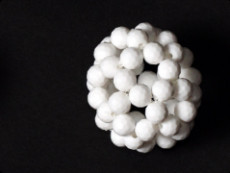The development of luminous materials is crucial to advancing humankind's technological capabilities. Several Nobel Prizes, including two in 2008 and 2010 for research on the production of green fluorescent proteins and super-resolved fluorescence imaging, serve as evidence of this. Fluorescent polymers are functional macromolecules with many relevant applications in several fields. In addition to fluorescent probes and smart polymer machines, fluorescent chemosensors, fluorescent molecular thermometers, fluorescent imaging, drug delivery carriers, and other applications are being developed using these materials. Two major branches can be distinguished in the field of fluorescent polymers (FPs) based on the strategies used to create these materials: (1) the use of a polymer chain (in general, using a conducting polymer) containing fluorophores, and (2) the burgeoning field of aggregation-induced emission (AIE) polymers. Confined polymers (CPs) have traditionally been used as primary FPs because the electronic conjugation between each repeating unit results in forming a semiconductive "molecular wire," which has both optical and electrical features that are particularly helpful in many applications. But non-conjugated polymers (NCPs) have progressively gained appeal as a method of fabricating functional polymers (FPs). This improvement was made possible mainly by advancements in controlled polymerizations of NCPs, which allowed for unprecedented control over polymer compositions and topologies to be achieved.
This Entry Collection is therefore devoted to the applications of fluorescent polymers as well as the investigation of their structural and dynamic features in synthetic polymers.
Please click here to find Guidelines for Submissions.

Sorry, there is no entry in this entry collection.
 Encyclopedia
Encyclopedia



